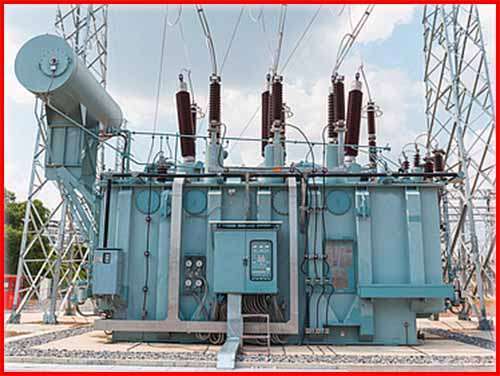Fault Current at Transformer Secondary: How to Calculate It
The fault current at transformer secondary is a critical concept in electrical systems. When a short circuit or fault happens on the secondary side of a transformer, large currents can flow, depending on system parameters. These currents can damage equipment, trigger protection systems, or even cause fires if not properly managed. Engineers must calculate and manage these fault currents for system safety and reliability.

What is Fault Current at Transformer Secondary?
When a transformer is connected to a load, it supplies current under normal conditions. But if a fault occurs, such as a line-to-line or line-to-ground fault, a large current called the fault current at transformer secondary flows. This current can be several times higher than the full-load current of the transformer.
It is important to know that this fault current depends on:
- Transformer rating
- Transformer impedance
- Voltage level
- Type and location of fault
If the fault is near the secondary terminals, the fault current is at its maximum. As the distance increases, the impedance of the line and other devices reduce the current.
Know more about Differential Protection of Transformer
Importance of Calculating Fault Current at Transformer Secondary
Knowing the fault current at transformer secondary helps in:
- Selecting circuit breakers and protective devices
- Coordinating protection schemes
- Ensuring equipment safety
- Preventing thermal and mechanical damage
Accurate fault current calculations are essential for protection design. They help in complying with electrical standards and ensuring human safety.
Basic Fault Current Calculation
The basic formula to calculate the fault current at the secondary of a transformer is:

Where:
- Ifault: Fault current at transformer secondary
- IFL: Full-load current
- Z%: Percentage impedance of the transformer
Example
Let’s consider a 1000 kVA transformer, 400 V secondary voltage, with 5% impedance.
- Full load current:

Fault current:

This shows that the fault current is about 20 times the full load current.
| Parameter | Value |
|---|---|
| Transformer Rating | 1000 kVA |
| Voltage Level | 400 V |
| Impedance | 5% |
| Full Load Current | 1443 A |
| Fault Current | 28,860 A |
Know more about How Difficult Is It to Learn Programmable Logic Controller (PLC)?
Role of Impedance in Fault Current at Transformer Secondary
Transformer impedance limits the fault current. Lower impedance allows more current to flow. Higher impedance offers more resistance and reduces the fault current. In practical design, standard impedance ranges from 4% to 10%, depending on transformer rating and purpose.
If two transformers have the same rating but different impedances, the one with lower impedance will deliver higher fault current.
Fault Current Distribution in Star Delta Transformer
In a star-delta transformer, fault current behaves differently than in a delta-star or star-star configuration. The delta winding provides a closed path for circulating currents. This can affect the fault current at transformer secondary by limiting zero-sequence components. Therefore, fault analysis in star-delta transformers must account for winding connection and phase shift. This influences the fault current distribution in star delta transformer systems significantly.
Impact of Fault Type on Fault Current at Transformer Secondary
Different types of faults result in different fault currents.
Three-phase fault
This is the most severe type. All three phases are shorted together. It results in the highest possible fault current.
Line-to-line fault
Only two phases are shorted. The current is less than a three-phase fault but still significant.
Line-to-ground fault
This fault includes one phase and ground. The current depends on the grounding system and transformer connection.
Know more about Best Industrial Electric Motor Manufacturers Near Virginia
Fault Current Division Factor and Its Role
The fault current division factor determines how current divides when there are multiple parallel feeders or transformers. It depends on the impedance of each path. Lower impedance paths carry more fault current. This factor helps in analyzing how much current flows through each protective device during a fault.
In a scenario with two parallel transformers, the one with lower impedance shares more of the fault load. Ignoring this factor can lead to underestimating fault currents in some feeders and overloading breakers.
Real-world Challenges in Fault Current at Transformer Secondary
Several practical issues complicate fault current calculations:
- Cable impedance and length
- Transformer tap settings
- Parallel transformer operation
- Source impedance variation
- Temperature effect on conductor resistance
These factors can alter the actual fault current observed at the site. Therefore, engineers often use software tools for more accurate simulation and analysis.
Know more about Industrial Electric Motor Manufacturers Near Washington, DC
Protection Against Fault Current at Transformer Secondary
Protection devices like circuit breakers, fuses, and relays are rated based on expected fault currents. For instance:
- The circuit breaker interrupt rating must be higher than the maximum fault current.
- The relay setting should detect and isolate faults quickly.
- The busbar and cable rating must handle fault current thermally and mechanically.
Example Table: Breaker Selection Based on Fault Current
| Breaker Rating (A) | Max Fault Current (kA) | Application |
|---|---|---|
| 630 | 10 | Small commercial loads |
| 1250 | 25 | Medium industrial loads |
| 2500 | 50 | Large transformers |
These ratings are selected by knowing the fault current at transformer secondary to ensure proper operation and prevent failure.
Know more about Top 10 Electric Motor Manufacturers in the World
Software Tools for Fault Current Calculation
Several tools can simulate and calculate fault current accurately:
- ETAP
- PowerWorld
- SKM Power Tools
- DigSILENT PowerFactory
These tools allow for detailed modeling, including line impedance, transformer saturation, and X/R ratios.
Fault Current of Transformer vs Load Current
The fault current of transformer is drastically higher than the normal load current. This contrast is essential in designing protection systems. Load current is continuous and moderate. Fault current is instantaneous and massive. The protection system must distinguish between them and respond appropriately.
In a typical 500 kVA transformer:
- Load current may be 700 A
- Fault current may rise to 14,000 A
This huge difference explains why rapid fault isolation is critical.
High Voltage vs Low Voltage Secondary Faults
In step-down transformers:
- High voltage side faults may be limited by system impedance.
- Low voltage secondary faults result in higher currents due to lower impedance.
Therefore, protection at the LV side must be more sensitive and faster.
IEC Standards and Fault Current
According to IEC 60909, fault current calculations must consider:
- Equivalent impedance method
- Maximum and minimum fault levels
- X/R ratios for DC offset
These standards help in designing safe and reliable power systems.
Transformer Sizing and Fault Current Impact
Transformer size influences fault current. Larger transformers deliver higher fault current. This affects:
- Busbar sizing
- Switchgear rating
- Protection setting
Hence, during design, engineers perform a fault current calculation before finalizing transformer rating.
Fault Current With Generator and Transformer in Parallel
If a generator is paralleled with a transformer, the fault current at transformer secondary is the sum of both sources. In this case:
- Synchronization must be perfect
- Protection coordination becomes complex
- Fault clearing time must be fast to prevent damage
This is common in industrial plants with backup or renewable power sources.
Tips to Reduce Fault Current at Transformer Secondary
- Use higher impedance transformers
- Add current-limiting reactors
- Use high-resistance grounding
- Split the load using multiple transformers
- Add zone-selective interlocking in breakers
Each method reduces stress on equipment during a fault.
Summary
The fault current at transformer secondary is a vital part of electrical system design. It depends on transformer impedance, system voltage, and fault location. Proper calculation ensures protection devices function accurately, preventing damage and ensuring safety. By understanding concepts like fault current of transformer, fault current division factor, and fault current distribution in star delta transformer, engineers can build robust and reliable power systems.
Tools like ETAP and standards like IEC 60909 help refine these calculations for real-world applications. Whether for an industrial plant, utility substation, or renewable energy grid, fault current knowledge is the foundation of safe electrical design.
Follow Us on Social:
Subscribe our Newsletter on Electrical Insights to get the latest updates in Electrical Engineering.
#TransformerFaultCurrent, #SecondaryFaultCurrent, #ElectricalFaults, #PowerTransformer, #ShortCircuitCurrent, #ElectricalEngineering, #TransformerProtection, #FaultAnalysis, #TransformerSecondary, #PowerSystemFaults, #TransformerDesign, #CurrentCalculation, #ElectricalSafety, #FaultCurrentStudy, #GridProtection




